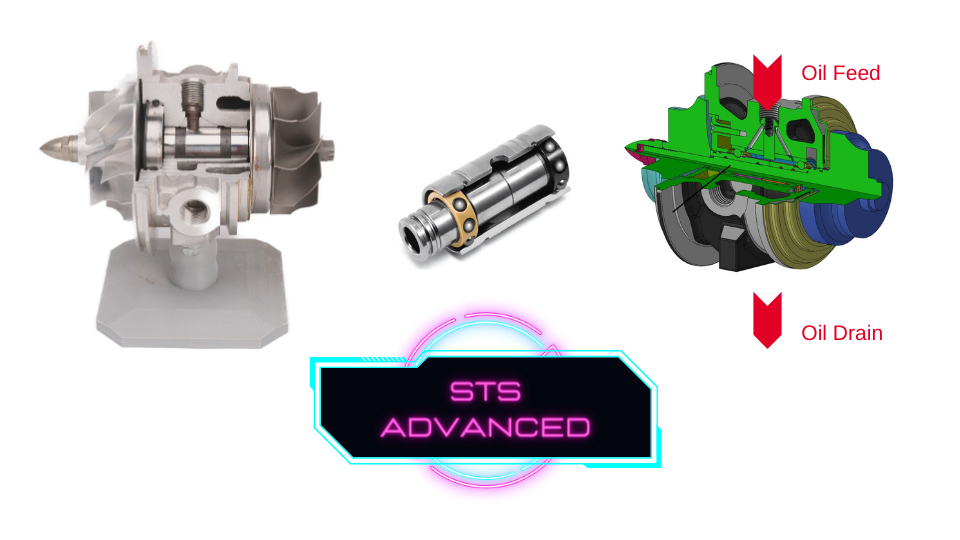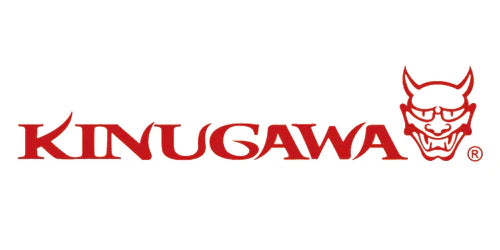For Ball Bearing Turbo
To ensure optimal performance of ball bearing turbochargers, it is recommended to use an oil restrictor. To prevent damage to the turbocharger's internals, maintain an oil pressure of 40-45 psi at maximum engine speed. For this, a restrictor with a 1.0 mm-1.5 mm orifice should suffice, but it's always wise to verify the oil pressure entering the turbo after the restrictor to ensure proper functioning of the components. Refer to our blog "Does my turbo need an oil restrictor" for more details. Use -3AN or -4AN line/hose/tubing with a similar ID for the recommended oil feed. Always use an oil filter that meets or exceeds the OEM specifications.

(OIL LEAKAGE SHOULD NOT OCCUR ON A PROPERLY FUNCTIONING SYSTEM IF THE RESTRICTOR IS NOT USED UNLESS THE SYSTEM PRESSURE IS EXCESSIVELY HIGH).
Our TD05 | TD06 Advanced turbochargers come with an oil restrictor and water fittings. There are also oil pressure regulators like the Turbosmart ORP T40.
For Journal Bearing Turbo
Journal bearings function similarly to rod or crank bearings in an engine – oil pressure is required to keep components separated. An oil restrictor is generally not needed except for oil-pressure-induced leakage. The recommended oil feed for journal-bearing turbochargers is -4AN or hose/tubing with an ID of approximately 0.25”. Be sure to use an oil filter that meets or exceeds the OEM specifications.
Perfect your oil knowledge before installations.
Properly lubricating the bearings is crucial during the installation of a turbo. Any delay in the supply of oil can damage the turbo within seconds. However, with the right information, processes, and tools, technicians can confidently complete an oil change or replacement project. Aftermarket professionals offer essential guidance on oil pressure and lubrication, covering:
- Turbo dynamic pressure sealing
- Oil pressure
- Oil delivery timing
- Oil drainage
- Turbo orientation
- Priming a replacement turbo
1. Turbo dynamic pressure sealing
It is a natural characteristic of a piston ring that it can never achieve a complete seal due to the presence of running clearance. However, this inherent feature is utilized in turbos to prevent oil leakage from the center housing. By bypassing some of the high-pressure exhaust gas behind the turbine wheel, a pressurized seal is created around the piston ring. Turbochargers use a dynamic and differential pressure sealing system. Generally, the pressure in both the turbine and compressor housing is higher than the center housing. Additionally, a differential oil pressure system can prevent oil from backing up into the turbocharger during instances of high oil pressure. Rapid acceleration or deceleration can create pressure that, if not regulated, can cause damage and decreased performance. Proper oil supply and pressure are crucial to ensure that turbocharger bearings are always lubricated. Before starting a replacement project, turbo technicians must refer to the manufacturer’s operating manual and lubrication specifications for information on oil grade, pressure, and operating temperatures.
2. Oil pressure
Oil pressure that is higher than normal typically happens only during cold start conditions. However, if it is possible to occur during normal engine operation, it is important to evaluate the potential consequences on the turbo by carrying out shaft motion tests. Moreover, it is recommended to assess the installation for possible oil leaks in the turbocharger that may be caused by the high pressure. In some engine configurations, it is common to limit the amount of oil that flows to the turbocharger. This is typically done by restricting the oil supply pipe when the engine oil pump has limited capacity. The purpose of this restriction is to prevent the engine from running out of oil, but it also reduces the oil pressure at the turbocharger inlet. It is important to carefully consider the implications of reducing the oil flow to the turbocharger, as inadequate oil supply can cause significant damage to the turbo.
3. Oil delivery timing
Getting oil to the turbo as quickly as possible after engine start-up is essential in avoiding damage or risking a catastrophic failure. A turbo reaches very high rotational speeds almost instantaneously, and if the specified oil pressure is not delivered as needed, not only is damage done, the failure will not be covered by a warranty. Factors affecting oil delay, there are a number of oil-related factors to take into account when considering the supply of oil to a turbo.
- Oil Viscosity: High-viscosity oils possess more drag and take longer to be “forced” through the supply pipe. Therefore, allowing a period for the engine to warm up can help reduce viscosity by thinning the oil and allowing it to flow more easily. This is especially important in colder temperatures, where oil tends to be more viscous.
Regular oil changes can help to prevent high viscosity issues by removing old, dirty oil that can cause blockages and thickening. Note that it is important to follow the manufacturer’s recommended oil change schedule to maintain correct engine lubrication.
High viscosity can also be a symptom of underlying issues, such as clogged oil filters or damaged engine components. Mechanics should thoroughly inspect the engine and identify any underlying issues that may be contributing to high viscosity.
- Pipe Diameter: Small pipes have a higher surface area to volume ratio and, as a consequence, produce greater viscous drag, creating a pressure drop and restricting and delaying the oil flow. Pipes measuring at least the recommended diameter for the turbo being installed should always be used.
- Pipe Length: The longer the oil supply line, the longer the delay in getting the oil to the turbo. A good installation is one where the supply length is minimized. So, in engine projects, try to position the turbocharger as close to the oil feed as possible to avoid problems.
- Bends and Restrictors: These cause pressure drops and will impact the oil supply to the turbo. As such, they should be avoided wherever possible.
4. Oil drainage
It is crucial to ensure that the oil supplying the turbo has the correct grade, viscosity, and pressure. It is also important to understand how oil drains from the central housing. The oil supplied to the bearings needs to drain rapidly from the center housing. Blow-by gases can increase oil volume significantly, so it is critically important to use the largest diameter drainpipe possible to guarantee optimal operating conditions. If the oil drain capacity of a turbocharger is insufficient, it can cause the oil to back up and eventually escape through the piston ring seals into the end housings, which can lead to damaging effects. Therefore, it is always advisable to inspect the opening of the center housing and the oil drainpipe for any misalignment to avoid any build-up. If you need to drain oil from a turbo as part of an engine project or oil change, follow the steps mentioned below:
- Locate the drain pipe: The drain pipe is usually located at the bottom of the turbocharger’s Center housing.
- Prepare a container: Catch the oil as it drains out of the turbocharger by placing a clean container underneath the drain pipe.
- Remove the drain pipe: Use a wrench or pliers to loosen and remove the drain pipe. Let the oil drain into the container.
- Clean the turbocharger: Once all the oil is drained, clean the turbocharger’s oil sump, drain plug, and sealing surfaces to prevent oil leaks. .
5. Turbo orientation
The proper installation angle of a turbocharger is critical for effective oil drainage. The orientation can vary depending on the type of vehicle, whether it’s a passenger car or a commercial truck. As previously mentioned, the lubricant leaving the center housing is highly aerated oil, and it's important to follow some straightforward guidelines to ensure that it can flow back into the engine crankcase. The drainpipe must be positioned in a downward direction, avoiding any horizontal or self-turning pipe, or one that enters the engine crankcase below the oil level, taking all possible engine inclinations into account. Failure to follow these guidelines could cause the oil to separate from the oil/gas mixture, creating a blockage, preventing satisfactory draining, and eventually leading to an oil leak.
6. Priming a replacement turbo
It is crucial to follow specific lubrication steps when installing a new or replacement turbo. Failure to provide adequate oil at start-up can cause severe damage to the turbo within seconds. Therefore, we recommend the following procedure:
- 1. Install a new oil inlet pipe to ensure sufficient oil flow to the turbo.
- 2. Install the oil drain pipe, then pour oil into the oil inlet hole of the turbo and connect the oil feed line.
- 3. Spin the compressor wheel by hand a few times.
- 4. Connect the inlet and outlet air hoses to the compressor housing, ensuring they are connected tightly.
- 5. Without starting the engine, crank it for 10-15 seconds to prime the oil feed to the turbo.
- 6. Finally, start the engine and run it at idle for 3-4 minutes to check for any leaks of oil, gas, or air.

